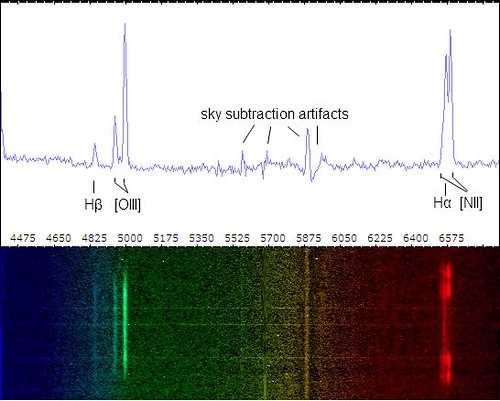Haven't you ever wanted to copy something you saw? ..And to author a portion of beauty through imitation?
Imagine we wanted to replicate one of the most charismatic planetary nebulas in the sky, NGC7293 - The Helix Nebula. What would we need for that?
This object's charisma depends greatly in its size! It looks big; it is close to us; it is actually the closest Planetary Nebula to us. Something we build, to be equally amazing would need to be located near the observer, also.
One could start off with a dying Sun-like star! The dying star would evolve from the "Red Giant" to the "White Dwarf" stage of stellar life, and in the process eject material from its atmosphere. When in the White Dwarf stage, strong stellar winds would blow the gas further away, and intense ultraviolet radiation should make it glow ionizedly pretty to our eyes.
Perhaps we could use our own Sun for this purpose; the trouble being the need to wait quite some time for our star to construct something similar!
Maybe we could fake all this, and spread the material in space around an existing white dwarf, giving it positions and speeds identical to those in the Helix Nebula. This would be a faster way to "copy" the Helix, at least within our imaginative brain... However, we still need to know what material to use for the gas, so it glows in the same manner as in the Helix.
For this, spectroscopy is handy, as it allows us to peek at what colours the Nebula is shining off!
Here is a spectrum, in visible light, of the nebula across its diameter! Each colour is separated horizontally, and the the (Esat-West) diameter is represented vertically. The faint horizontal lines are actually stars, that shine in all colours like very hot bodies do.
Imagine we wanted to replicate one of the most charismatic planetary nebulas in the sky, NGC7293 - The Helix Nebula. What would we need for that?
This object's charisma depends greatly in its size! It looks big; it is close to us; it is actually the closest Planetary Nebula to us. Something we build, to be equally amazing would need to be located near the observer, also.
One could start off with a dying Sun-like star! The dying star would evolve from the "Red Giant" to the "White Dwarf" stage of stellar life, and in the process eject material from its atmosphere. When in the White Dwarf stage, strong stellar winds would blow the gas further away, and intense ultraviolet radiation should make it glow ionizedly pretty to our eyes.
Perhaps we could use our own Sun for this purpose; the trouble being the need to wait quite some time for our star to construct something similar!
Maybe we could fake all this, and spread the material in space around an existing white dwarf, giving it positions and speeds identical to those in the Helix Nebula. This would be a faster way to "copy" the Helix, at least within our imaginative brain... However, we still need to know what material to use for the gas, so it glows in the same manner as in the Helix.
For this, spectroscopy is handy, as it allows us to peek at what colours the Nebula is shining off!
Here is a spectrum, in visible light, of the nebula across its diameter! Each colour is separated horizontally, and the the (Esat-West) diameter is represented vertically. The faint horizontal lines are actually stars, that shine in all colours like very hot bodies do.
Those colours are the result of ionizing the gas via intense radiation by the central star. visible from left to right are wavelengths of light corresponding to Hydrogen, Oxygen, then more Hydrogen and Nitrogen.
As for the quantities for each element, that is trickier to know. But we can try to match the intensity of colours, adding more or less atoms to get the right intensity of each colour. We should keep in mind, though, that what we see of this nebula is radiation-bounded; this means we only see the portion of nebula that is made visible by the radiation of the central star, and then the gas and dust of the nebula itself can cast shadow over more "invisible" and not yet ionized material.
So we now know what to put in a "New Helix" recipe; next we need to know how fast all of it should be moving in a bubble shape, to make it really realistic! For that, stay tuned for Part Two of "How to make an Helix"!
I hope this shed some light on how to properly replicate a planetary nebula, in case you ever stumble across the need for such endeavour..
As for the quantities for each element, that is trickier to know. But we can try to match the intensity of colours, adding more or less atoms to get the right intensity of each colour. We should keep in mind, though, that what we see of this nebula is radiation-bounded; this means we only see the portion of nebula that is made visible by the radiation of the central star, and then the gas and dust of the nebula itself can cast shadow over more "invisible" and not yet ionized material.
So we now know what to put in a "New Helix" recipe; next we need to know how fast all of it should be moving in a bubble shape, to make it really realistic! For that, stay tuned for Part Two of "How to make an Helix"!
I hope this shed some light on how to properly replicate a planetary nebula, in case you ever stumble across the need for such endeavour..

No comments:
Post a Comment